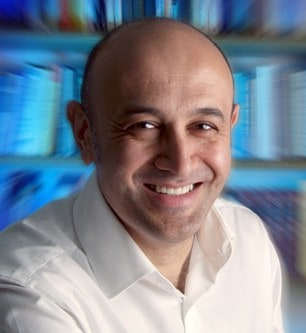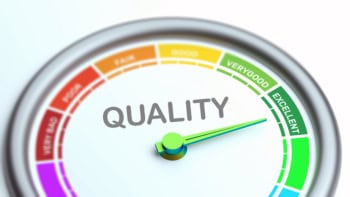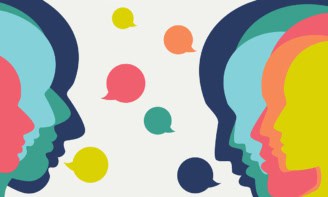
By Margaret Harris
One of the highlights on physicsworld.com last week was an online lecture by the University of Surrey physicist and science communicator Jim Al-Khalili, who spoke on the subject of his recent book Pathfinders: the Golden Age of Arabic Science.
If you missed the live version of Al-Khalili’s lecture “On the shoulders of eastern giants: the forgotten contributions of medieval physicists”, you can watch an archived version of the hour-long event here. Be sure to stay all the way to the end, when Al-Khalili tackles some probing questions from audience members – including one asking why these physicists’ contributions have been forgotten in the West, and another wondering why science declined in the Arabic-speaking world after the medieval period.
As usual with these question-and-answer sessions, we ran out of time long before you ran out of questions. On this occasion, several of the ones we couldn’t fit in were so interesting that we asked Al-Khalili to send us written answers so we could share them with you. Below are his replies.
physicsworld.com audience: Is there a relationship between Islam as a religion and what the Islamic civilization achieved in science?
Jim Al-Khalili: Science was encouraged in early Islam, and evidence can be found for this in the Koran and the Hadith (the words of the Prophet). It was seen as a religious duty to understand the wonder of God’s creation.
Have Islamic or Arabic scientists participated in physics after Galileo? If so, what have been their main contributions? If not, what do you think is needed for the Arabic-speaking world to participate again?
For me, one of the greatest physicists of the last 100 years, anywhere in the world, was the Pakistani Muslim Abdus Salam, who won the Nobel prize in 1979 for his part in developing the electroweak theory. But it’s fair to say that in terms of scientific achievements in recent years, the Muslim world has a lot of catching up to do. There are very good signs though, such as increased funding of science in many countries, and the Arab Spring gives many millions hope of a brighter future.
Were there any female medieval Arabic-speaking scholars?
There were a few, including Miriam al-Ijli al-Astrulabi, who hand-crafted intricate astrolabes (an early type of global-positioning system), and the entrepreneur Fatima al-Fihri, who in the 9th century founded the world’s oldest university in Morocco.
Was the concept of photons or particles of light also mentioned by an Arabic scholar?
Yes. Remarkably, Ibn Sina described light as being composed of particles, disagreeing with Ibn al-Haytham who thought of it as waves – albeit not in the modern strictly mathematical terms we understand them today, with wavelengths, frequencies etc.
Any comments on the accuracy of the time-span of a lunar year as measured by Khayyam 1000 years ago?
Utterly incredible achievement. It agreed with our modern estimate to six decimal places.
I know that Arabic is written from right to left, but in your slide about the decimal point, it seems that the numbers were written from left to right. Am I confused, or are you?
Sorry to disappoint, but I am not confused. I spent all my schooldays in Iraq and all my maths until A-level was in Arabic. Although Arabic text is right to left, the numbers are indeed the same as we would write them. Equations are still right to left, though, so they would write: 10 = y + x instead of x + y = 10. But remember, numerals start with units on right, followed by tens followed by hundreds, increasing right to left.
Were there any Islamic speculations regarding atoms?
No, nothing beyond what they might have learned from the Greeks Leucippus and Democritus in the 5th century BC.
Is it really fair to say that the Greeks didn’t know about trigonometry, or that Eratosthenes’ measure of the Earth’s circumference to within 1 percent was just lucky?
Yes, it is fair to say that the Greeks didn’t know about trigonometry. Their strength was geometry, as synthesized by Euclid in his Elements. Although astronomers such as Ptolemy did have tables of what were essentially tangents of angles, that is not the same as real trigonometry, which began in India and was developed further by a number of Muslim mathematicians such as Al-Biruni, Abu al-Wafa’, Ibn Yunus, Al-Battani, Al-Tusi and Al-Kashi.
Yes, Eratosthenes was lucky. I discuss this in my book. Here is an extract:
“There were a number of serious errors, inaccuracies and crude guesses involved in his method that conspired by chance to give an answer close to the correct one. While the midday Sun at the summer solstice is indeed directly overhead at the Tropic of Cancer, the city of Syene was not on the tropic but about 22 miles north; nor was it exactly due south of Alexandria. Most importantly, it would not have been possible to measure the distance between the cities with any degree of accuracy at all. Counting paces would have been unreliable and the path taken would in all likelihood have followed the meandering course of the Nile, including the complex Delta region around Alexandria. Lastly, we do not know the exact length of his unit of distance (the stadion)…In any case, the fact that the number of paces came to exactly 5 000 stadia is suspicious and most modern historians do not believe Eratosthenes ever did have the distance measured in this way but had unwittingly used instead a value for the distance that itself had been calculated from an even earlier estimate of the Earth’s circumference; a sort of circular logic whereby an estimate of the Earth’s circumference is used to deduce a distance that is then itself used to recalculate the circumference.”
Al-Biruni seems to have been brilliant. Could you say a bit more about him?
You’ll have to read my book!
Jim Al-Khalili’s book Pathfinders: the Golden Age of Arabic Science (2010 Allen Lane) is available now in hardback



